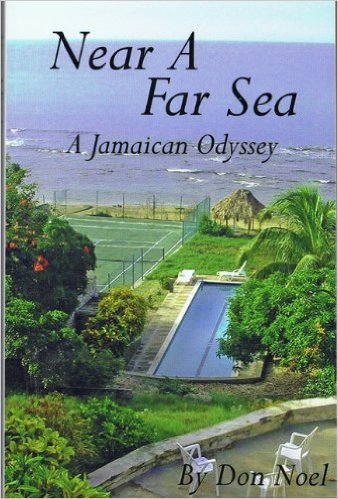The sport of calf-roping, although lacking the national popularity of golf or various team endeavours with larger orbs, has an avid audience, and is perhaps unique in demanding disciplined flexibility of the human wrist.
In other sports, the wrist may impart spin  to a ball or direction to the tip of a bat. Calf-roping requires turning an outstretched hand a full 360 degrees—repeatedly—while keeping the palm down and the back of the hand upward.
to a ball or direction to the tip of a bat. Calf-roping requires turning an outstretched hand a full 360 degrees—repeatedly—while keeping the palm down and the back of the hand upward.
Before one can lasso a calf, one must learn to keep the loop open. From a rodeo grandstand, that may look easy, but it is complex.
The rope must be stiff. Although once made of horsehair and later of long-fiber hemp, most nowadays are nylon or polyester. Clothesline would be too limp in any but the most expert hands. Conversely, I rode for a time with a Paiute whose braided leather riata was sensationally easy to throw; but I suspect braiding those is a dying art.
Even with a new, firm rope one must build the loop carefully, hand holding the lariat at the eye through which the rope is threaded, thumbing out more rope to widen the oval.
When the loop is broad enough to provide some margin when tossed over the head of a fleeing calf, one brings it fully overhead, careful not to clip the ears of one’s horse, leaning forward and rising a bit in the stirrups—while keeping it open. If one fails, the open loop usually twists into an ungovernable figure eight; one must stop, straighten the rope by trailing it in the dust, and re-coil it into one’s left hand.
Keeping the loop open would be easier if the human wrist were a ball joint; but it is not, so the hand must turn over with each revolution. That would be a complex geometry of motion even if one were swinging a mere whip, or one’s belt, or a hank of rope.
The lariat is not just a hank of rope, of course, and one must build it into a wide, pregnant oval, as nearly round as one can manage while swinging it overhead once, twice, sometimes a third time, gauging the distance to the quarry ahead.
Meanwhile, that quarry is galloping on, and one’s horse—well-trained to this task, a reliable partner in a symphony of moving parts—is narrowing the gap while keeping slightly to the left so the right-handed cowboy can get a clean toss forward. (Such man-and-mount teams will occasionally rope yearlings, cows, and even bulls, but calves are easier because they have not yet become wily and learned how to duck.)
With a happy combination of luck and skill, the cowboy tosses the loop, still flat and open. The rope pays out smoothly enough that the loop flies out just ahead of the calf, then drops of its own weight, still open, for the calf to obligingly run its head into.
Snap! Any slack is pulled up and back, and the rope is brought down to be snubbed twice around the horn of the saddle, that rancher’s capstan. The horse needs no instruction: It stops, almost back onto its haunches. The cowboy, in fluid motion, curls a half-hitch knot over the horn, dismounts and runs to the calf. If it is still on its feet, he uses a hip to bring it down. He pinions it and keeps it down by hog-tying its feet—why hog-tie? who knows?—with a short rope.
In a much earlier time, a greenhorn cowboy fresh from the urban wilds of New Jersey began to learn the craft on foot, roping such stationery targets as a keg of nails. He graduated to learning to stay astride his horse while manipulating his lariat. Then, confident, he left the corral to practice on the open range.
Picture it: a desert valley, elevation 5,000 feet, on the California-Nevada border. Beyond the southern rim of its own mountain bowl peeks the 14,000-foot crest of the High Sierra, the Palisades, which trap any Pacific moisture that has made it this far inland and so are perennially snow-covered. Our resulting moisture-starved valley floor can sustain little more than thinly-spaced cactus and Joshua trees amidst rabbitbrush and sagebrush.
Out there under a cloudless blue sky, it occurred to the neophyte to try galloping along and roping a keg-sized sagebrush. He succeeded, snubbing the rope to the saddle horn as the horse hunkered to a stop.
As noted above, that maneuver can bring a calf to its knees. Applied to a sagebrush whose roots perhaps reached halfway to Mexico in search of moisture, the result was exactly opposite: It nearly pulled the saddle off the horse.
Chastened, the tenderfoot re-saddled and rode back to the corral to polish his pitch, deciding not to test his skill in the fall rodeo in nearby Bishop.
There was an occasion the following spring, however, when the roping ability paid off. Before the herd was driven to summer range, a new class of calves had to be inducted, a graduation ceremony that included a hot-iron brand on the hip, a distinctive notch cut into one ear, a hypodermic inoculation, and castration for the males—bloody, dirty, tiring work.
But someone had to bring the calves to the operating corral. A few horseback cowboys roped them one-by-one—by the head or sometimes the heels—and dragged them to the ministrations of those on foot. The New Jersey greenhorn was good enough at that to spend the day in the clean, comfortable saddle.
The time spent practicing had been well worthwhile, mastering a geometry and economy of motion that begins with building a loop and keeping it open.





